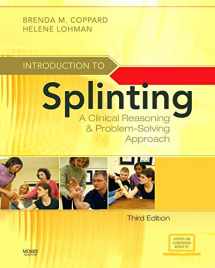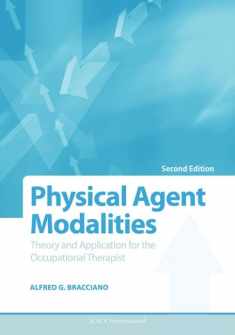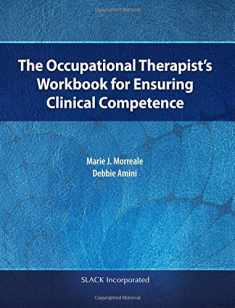
Introduction to Splinting: A Clinical Reasoning and Problem-Solving Approach
ISBN-13:
9780323033848
ISBN-10:
0323033849
Edition:
3
Author:
Helene Lohman OTD OTR/L FAOTA, Brenda M. Coppard PhD OTR/L FAOTA
Publication date:
2007
Publisher:
Mosby
Format:
Paperback
544 pages
FREE US shipping
Book details
ISBN-13:
9780323033848
ISBN-10:
0323033849
Edition:
3
Author:
Helene Lohman OTD OTR/L FAOTA, Brenda M. Coppard PhD OTR/L FAOTA
Publication date:
2007
Publisher:
Mosby
Format:
Paperback
544 pages
Summary
Introduction to Splinting: A Clinical Reasoning and Problem-Solving Approach (ISBN-13: 9780323033848 and ISBN-10: 0323033849), written by authors
Helene Lohman OTD OTR/L FAOTA, Brenda M. Coppard PhD OTR/L FAOTA, was published by Mosby in 2007.
With an overall rating of 3.7 stars, it's a notable title among other
Decision-Making & Problem Solving
(Management & Leadership, Injuries & Rehabilitation, Exercise & Fitness, Occupational Therapy, Allied Health Professions, Nursing) books. You can easily purchase or rent Introduction to Splinting: A Clinical Reasoning and Problem-Solving Approach (Paperback) from BooksRun,
along with many other new and used
Decision-Making & Problem Solving
books
and textbooks.
And, if you're looking to sell your copy, our current buyback offer is $0.34.
Description
The third edition of Introduction to Splinting: A Clinical Reasoning and Problem-Solving Approach helps readers master the basic theory, principles, and techniques of splinting needed for clinical practice. Using a combination textbook/workbook format, it integrates theory and technical knowledge with hands-on learning features that equip readers with essential clinical knowledge, critical thinking skills, and problem-solving skills associated with splinting.
- Comprehensive coverage presents the fundamentals of splinting that a therapist needs to know.
- Self-quizzes, case studies, and lab exercises help readers bridge the gap between learning and practice and apply what they've learned to real-life situations.
- Key terms, chapter outlines, and review questions highlights specific information that the reader can expect to learn from each chapter.
- Combined textbook/workbook format reinforces information as it is learned and encourages practical application of concepts.
- Content has been updated to include new research and techniques, current trends, and new information sources.
- Lists of key terms for each chapter help familiarize the reader with relevant terminology.
- Two new case studies have been added to each chapter, strengthening the book's clinical application focus.
- Companion CD contains video clips demonstrating how to fabricate specific splints.
- Four new chapters cover topics such as occupation-based splinting, tools, processes, and techniques of splinting, and splints for the elbow, shoulder, and fingers.
- Chapters are divided into three units: splinting foundations; splints for conditions and populations; and topics related to splinting.
- A new appendix directs readers to helpful online resources and vendors.


We would LOVE it if you could help us and other readers by reviewing the book
Book review

Congratulations! We have received your book review.
{user}
{createdAt}
by {truncated_author}




